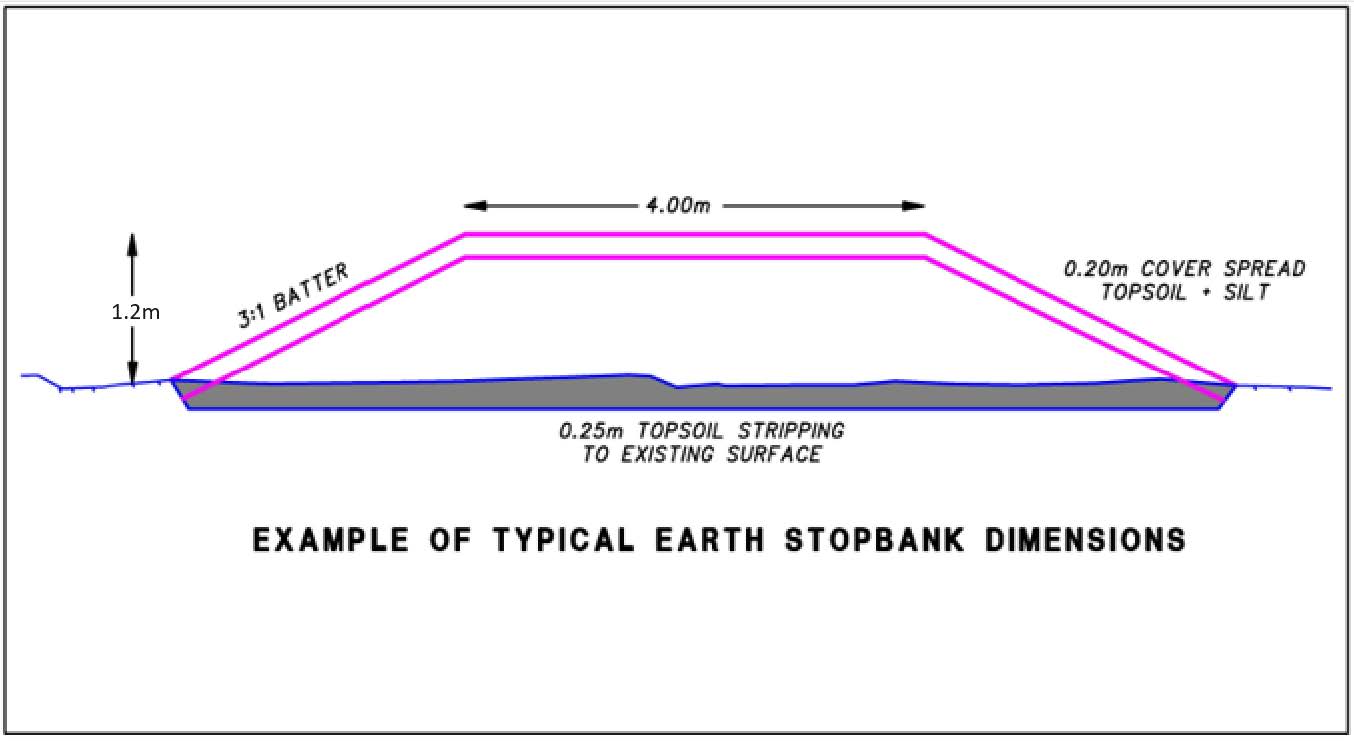Start of Cats Creek work marks important milestone for the Resilient Westport programme
Early work on one section of Westport’s flood protection scheme is underway, marking the first physical works for the approximately $24 million dollar flood protection project.
The estimated cost is made up of a $15.6m contribution from government and $8.37m from West Coast Regional Council.
Contractors are on site at Cats Creek this week to start work on the 50-metre-long earthen stopbank.
The project is a small earthen bund, which will redirect floodwaters in Cats Creek to the Abattoir Drain. The bund will assist in reducing inundation of properties downstream of Cats Creek. A diagram of a typical bund of this kind is provided.
Westreef Services Ltd has been awarded the contract, with pegging out the embankment starting on Tuesday 27 August. This will be followed by spraying grass and other preparation before the start of physical works, two to three weeks later.
This is to allow the grass and vegetation time to die off before it will be removed along with about 300mm of topsoil – to be put back later. The embankment is built in layers, much like a road. The Cats Creek work is expected to take about two months all up.
West Coast Regional Council Chief Engineer Peter Blackwood says Cats Creek is a small project in the big scheme of things, but it’s good to see it get underway.
“Cats Creek has been delayed somewhat from the originally planned start date, but we have ironed out any issues and can now get started. We are also close to starting vegetation clearance at Floating Lagoon to allow us to remediate low sections of the existing stopbank. Geotechnical design on the McKenna Road stopbank is now well underway, with civil design following suit.”
West Coast Regional Council Chair Peter Haddock is also welcoming the start of physical works.
“Completing these works will significantly reduce flooding in Eastons Road and Mill, Domett and Colvin streets which all flooded in 2021.
“The Cats Creek start takes the project from plans to reality. Sometimes it’s difficult for us to communicate how much preparation goes into a project, or piece of work, before the first spade hits the ground and this is no different.
“We always need to carry out an environmental impact assessment, complete geotechnical investigations and proceed with design, which may require a number of iterations as the quality of information improves, or the need for change is identified.
“In many cases consents are also required. We always talk to affected stakeholders when our work overlaps with their worlds, so this is a small but important milestone,” says Cr Haddock.

-ENDS-
For further information please contact:
West Coast Regional Council Chief Engineer
Peter Blackwood
peter.blackwood@wcrc.govt.nz
For more information on Resilient Westport’s flood protection work, go to: https://www.resilientwestport.co.nz/flood-protection
